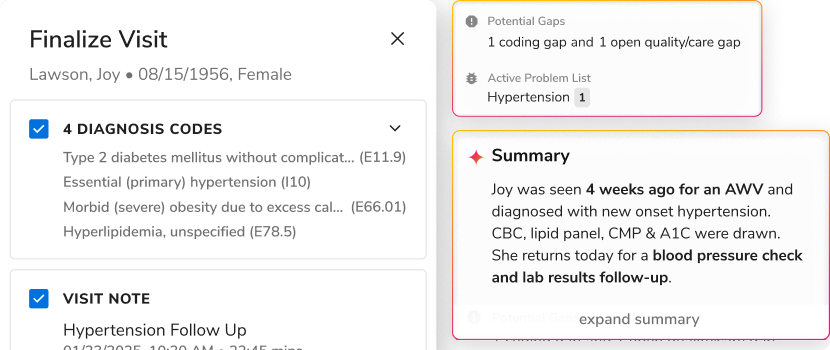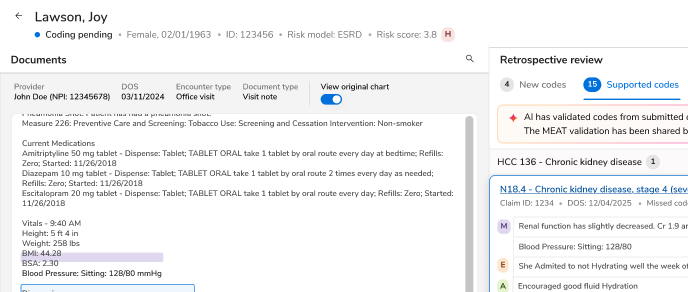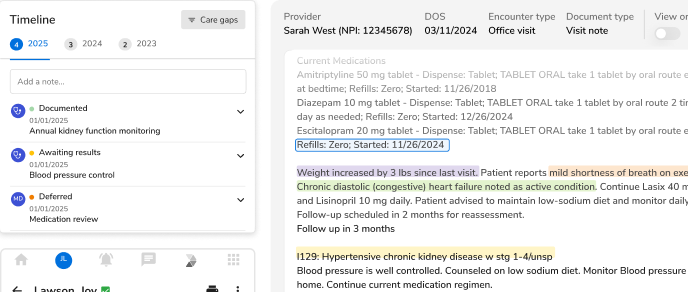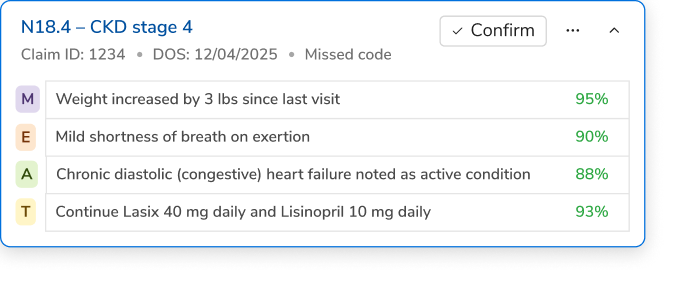How can you succeed and innovate in healthcare’s 2021 digital transformation?

As the healthcare industry turns to new innovations to streamline care delivery and improve stakeholder experience, it’s essential to understand how to build a foundation for a stable healthcare data platform. Digitizing healthcare data and processes took nearly a decade, and the next step is to unlock siloed health information on a cloud platform to build new digital services and solutions with native interoperability.
Over time, healthcare data platform vendors have gained insights that will be useful in developing tools for the future of healthcare. Offering solutions for patients, providers, clinicians, and payers, the healthcare industry has been working to:
- Improve care experiences
- Promote better population health
- Reduce healthcare costs for the past decade
As the industry has worked toward these three goals, there are a few crucial concepts that vendors must emphasize to build robust healthcare solutions.
Patient-Centered Care
A majority of vendors offer a holistic range of solutions that help healthcare organizations overcome challenges such as physician burnout, revenue management, patient relationship management, and clinician support. However, patients often receive disjointed care with these solutions. Vendors usually address different parts of the healthcare problem, but a connected healthcare solution is harder to find.
To lead successful digital transformation and address the challenges of rising costs and unsatisfactory care outcomes, care organizations need to ensure the continuity of care across various quality modules. In other words: Vendors need to address each part of the problem meticulously while also weaving quality modules together to make patient journeys continuous across care departments and visits. Here’s an example:
A patient is diagnosed with a condition at a clinic. While the provider prescribes a treatment, the health IT vendor for the clinic supports the documentation for the in-person visit and the revenue cycle workflow. However, once the appointment is finished, the provider loses touch with the patient as the same vendor doesn’t handle patient engagement, post-discharge follow-up, patient outreach, and information tracking within care workflows. Healthcare solutions on disparate platforms can make it challenging to deliver patient-centered care, and care organizations need to invest in solutions that can provide a seamless, connected care experience and address challenges for patients, providers, administrators, or clinicians on a secure, tightly interconnected data platform.
Free and Complete Interoperability
The healthcare industry generates large amounts of data; however, almost most healthcare organizations are unable to use all the data available to them due to system and integration challenges. This wasted data costs the healthcare industry approximately $342 billion annually.
To curb rising costs, patient data must become more accessible. Free interoperability allows organizations to share their data with third-party applications for the following purposes:
- Universal patient records
- Risk stratification
- Analytics
- Reporting for quality measures
- Care coordination
- Population health management
Interoperability is the key to unifying data and achieving the above healthcare goals. Healthcare organizations need to collaborate with vendors that integrate with the most common data sources across health systems—EMRs, claims data, data from bedside medical devices, personal health devices, remote patient monitoring devices, finance, and supply chain systems, and third-party data—on factors such as social determinants of health and pollution. Gaining a deep understanding of data sources and aggregating data from multiple sources can accelerate time to value.
Leading EMR vendors with a significant market share often lack the framework to connect to other facilities using competing EHR systems. They instead focus on exchange within their EMRs only, increasing interoperability issues. In order to use third-party applications for clinical record management, care management, and analytics, providers associated with these vendors need to turn to different versions of applications in order to access patient information and records. This, in turn, increases administrative burden and introduces redundancy. EMR vendors haven’t yet solved this issue and do not provide integrations or smooth workflows for out-of-EMR integrations and systems. Although these vendors may work as standalone solutions, they hold health systems back from improving financial and clinical outcomes without interoperability.
Health systems need to work with healthcare technology companies that have developed integrations with EMR systems to leverage the power of truly unified patient data. With healthcare data interoperability, providers can work in one application and can supplement their existing EMR functionality with flexible and easy-to-use solutions. To excel in today’s environment, a sustainable platform on top of existing EMRs that helps healthcare organizations exchange information by bringing all patient information together on a unified record is foundational. It allows healthcare organizations to view, understand, and analyze patient data in one place and make informed interventions on clinical or financial gaps. Once all of the organization’s information flows through a single pipeline and comes out in a readable, analyzable, standardized format, care organizations can host data-driven solutions to create true, realizable value for providers.
Implementation and Usability
Healthcare organizations are investing more in digital transformation journeys, so vendors and technology companies need to streamline the implementation of their technology for providers and care teams. After heavily investing in big data technologies, healthcare organizations have to usually reinvest in training a new set of consultants on their technology to lead to higher objectives like data governance.
Healthcare solutions and systems need to be easy to configure and providers need assistance to unlock the full potential of technologies and solutions. Unfortunately, that is not possible for many vendors to do. In the case of large healthcare enterprises with millions of patients and thousands of providers, going live with any solution on the organizational level can be challenging. Healthcare organizations require a platform with bolt-on solutions that comes equipped with a guide designed to ensure successful adoption across provider networks. Before going live with the solution, organizations should ensure that extensive user testing is done. The solutions should help monitor usage while identifying and minimizing the variance in provider adoption throughout the organization, and quickly resolve issues to lead the implementation successfully.
Customization and Desired Visualization
Healthcare systems are always looking for ways to measure and sustain their growth. With traditional reporting models, more time was spent looking for data than was spent deriving meaning from it. The files that held the data required clinicians to sift through it, analyze it, and ultimately rely on their interpretation rather than objective data points—much different than a value-based care system.
Although most health systems now have access to dashboard solutions, most of them are standardized and do not meet specific health system requirements. Health IT vendors need to understand that the “one-size-fits-all” approach no longer delivers true value to organizations, as the performance measures (PMs) and Key Performance Indicators (KPIs) vary across healthcare organizations. In order to drive results-oriented outcomes and implement measures for improvement, KPIs should be in line with the health system’s goals, and dashboards should be able to measure, monitor, and analyze progress. Many vendor solutions do not offer customizable performance and visualization dashboard modules.
Healthcare organizations often invest in technology that lacks capabilities and appropriate metrics for tracking key objectives. Health systems need balanced, interactive performance dashboards with robust data to:
- Gather invaluable information from their data,
- Identify areas that need improvement
- Plan clinical interventions
- Monitor costs
- Deliver true value-based care
With clearly defined KPIs, a rich collection of data analytics, and an interactive dashboard, healthcare organizations need vendors to develop a command center that makes information accessible for organizations to meet their goals. The performance dashboards should give providers control over which KPIs to track while the solution measures, monitors and analyzes progress. Any customization should be managed by onsite support with a quick turnaround. Using these customized dashboards, providers will be able focus on a few key measures and get real-time alerts to meet the immediate needs of patients, track the impact of treatments, and change care plans if needed.
The Road Ahead
Health systems need to ensure premium data quality and utilization to create value in healthcare. The first step is selecting the right healthcare technology to meet organizational goals, lead digital transformation, and improve clinical and financial outcomes. It is challenging to select the right healthcare technology in a saturated marketplace before knowing how the factors above can affect an organization’s success in the value-based care environment. However, once healthcare organizations understand the power of a unified data platform, the steps toward improved patient outcomes and lower costs become clearer.

.png)





.png)









.svg)
.svg)

.svg)

